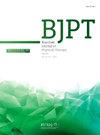Pain revolution in the public health system: Active coping strategies for chronic pain unit
IF 3.1
3区 医学
Q1 ORTHOPEDICS
引用次数: 0
Abstract
Background
Chronic pain represents a global health challenge demanding a transition from traditional biomedical to patient-centered biopsychosocial models. This masterclass explores active coping strategies for effective chronic pain management within healthcare systems. It describes the Unit of Active Coping Strategies for Chronic Pain (UAAD – Unidad de Afrontamiento Activo para el Dolor) in Primary Care in Valladolid, Spain, as a successful example of implementing a biopsychosocial care model for treating chronic pain.
Objective
To provide tools that allow the application of active coping strategies in the treatment of patients with chronic pain and how to implement the UAAD units in other healthcare systems.
Methods
This masterclass describes the UAAD's innovative approach, starting with its comprehensive and personalized methodology. This includes a referral system, a thorough assessment encompassing biological, psychological, and social factors, and a functional categorization system. These elements guide personalized treatment plans delivered through group and individual programs grounded in therapeutic exercise and pain science education. Four key pillars are highlighted: clinical care, teaching, resource management, research and dissemination.
Conclusion
Embracing this model empowers healthcare providers to address the growing burden of chronic pain. It also enables patients to take an active role in their recovery and self-management.
求助全文
约1分钟内获得全文
求助全文
来源期刊
CiteScore
6.10
自引率
8.80%
发文量
53
审稿时长
74 days
期刊介绍:
The Brazilian Journal of Physical Therapy (BJPT) is the official publication of the Brazilian Society of Physical Therapy Research and Graduate Studies (ABRAPG-Ft). It publishes original research articles on topics related to the areas of physical therapy and rehabilitation sciences, including clinical, basic or applied studies on the assessment, prevention, and treatment of movement disorders.

 求助内容:
求助内容: 应助结果提醒方式:
应助结果提醒方式:


